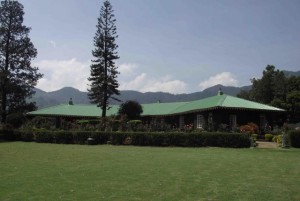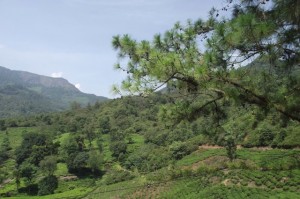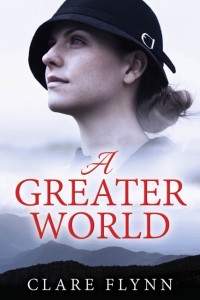Today, I’m delighted to welcome Clare Flynn to Virtual Book Club, a series in which I put questions to authors about their latest releases. If there’s anything else you’d like to know, you’ll have the opportunity to post your questions at the end.
Clare lives in West London, where she juggles novel writing with running a strategic marketing and innovation company and managing the increasing demands of the popular website, Make it and Mend it, that she co-founded a few years ago.
Born in Liverpool, the eldest of five children, she read English Language and Literature at Manchester University. where she says that she spent most of her time studying sex, drugs and rock and roll rather than Beowulf and Chomsky.
Clare’s business career was in consumer marketing, promoting products from Fairy Liquid and Flash to chocolate biscuits and tinned tuna. This included stints in Paris, Brussels and Milan. She now loves being her own boss and still gets around the world quite a bit.
A Greater World was begun in 1998 after Clare’s first visit to Australia. Having got half way through writing the first draft, her home was burgled, and the thieves ran off with the MacBook she’d written it on and the backup laptop. Needless to say that was a bit of a blow. Reading that T E Lawrence left the manuscript of Seven Pillars of Wisdom on a train, and went on to recreate all 700 pages of it, gave her the impetus to sit down and start again. It was finished in July 2011 and finally published in 2014.
In between her writing and working, Clare loves to travel – always with her watercolours. Both her novels started out with places she visited on her trips. A visit to the Deep South in November 2014 is now providing inspiration for her work in progress.
Clare is a fellow member of The Alliance of Independent Authors. She is also a member of The Historical Novel Society and is an Ethical Author.
Q: Welcome Clare. Let’s start with the protagonist from your most recent release, Kurinji Flowers. What words best describe Ginny Dunbar?
A lost soul, starved of love, desperate to please, insecure, often overly critical of others – she makes snap judgments, creative, opinionated, easily discouraged, but with a sense of humour. She is a woman who is searching – for love, for self understanding, for reconciliation with her own past.
Q: Where is the novel set and how did you decide on its setting?
Kurinji Flowers is set in Southern India, in the uplands of what is now Kerala and, at the time of the book, was known as Travancore. It’s a very beautiful region covered with tea plantations. The book centres on a fictional town, Mudoorayam – appropriately known to the colonial residents as Muddy. It’s closely based on the town of Munnar and I chose the setting while there on holiday. Unable to sleep one night in a Munnar hotel, I lay in the dark wondering who might have stayed in this 1920’s bedroom before me and the first elements of the book formed in my mind. After I completed the first draft, I returned to India, alone, to stay on a tea plantation in what used to be the manager’s bungalow in the 1930s, about fifteen miles outside Munnar. I was the only guest and spent my days walking and painting – as Ginny does in the book. Several of the scenes she paints I painted too – but to nowhere near her standards! During my stay I continued to edit the book. Unfortunately I have yet to witness the flowering of the kurinji flowers of the title as this occurs only once every twelve years and won’t happen again until 2018. I’d love to return for that.
Q: What were the major areas you had to research?
The book opens in 1936 and most of the action takes place in the following ten years. Ginny starts out as a debutante and as she is caught up in a scandal she forgoes her presentation at court. 1936 was, of course, the year of the abdication of Edward VIII so I needed to understand the protocols – it turns out that he (presumably disdainful of the whole prospect) decided to have the presentations in the gardens of Buckingham Palace instead of the staterooms. As a result, the poor debs got drowned in the pouring rain while he was under a canopy. I did a lot of research on the weather – it was an incredibly bad year.
Ginny is rejected in an interview for art school and I made the school principal a real person, the artist F. Ernest Jackson who headed the Byam Shaw School in Notting Hill. One of the pleasures of research is discovering new things – I’d never seen his work before as, apart from an exhibition at the Ashmolean Museum in 2000, he has fallen into obscurity, which is a great pity. I have since found out he used to live in a house about ten minutes walk from me – I pass it frequently when walking along the Thames.
As I write about displacement, I have to get my characters to their destinations and that means understanding modes of transport. For this book and its predecessor (A Greater World set in Australia in 1920) I waded through shipping schedules and flight timetables. Ginny sails on a real ship, The RMS Viceroy of India and also has a week long trip by air in the pre-jet age. Even when details don’t make it into the book I have to nail them as I have an imaginary reader who is an expert in all these arcane details and I know he will kick up a terrible fuss and give me horrible reviews if I get it wrong.
Other topics I researched are tea-growing, Indian deities, Indian love poetry, the town of Munnar, films released in 1936, popular music and much more. I do a lot of reading – books, articles, letters. I do some research online but also go to the British Library, museums and to visit locations.
By far my favourite piece of research was blagging my way into the extremely snobby High Range Club in Munnar. The Club was the core of colonial social life in the pre-Independence days and I needed to get first hand experience of what the place was like. Stupidly I didn’t seek permission before my visit and almost had to get down on my knees to beg for entry (no photographs permitted) to both the membership secretary and the club chairman. Snobbery certainly did not die when the British left.
Q: Where does this novel fit in with the rest of your work?
All my books so far involve displacement: England to Australia in A Greater World, where Elizabeth Morton and Michael Winterbourne are reluctant emigrants following tragic events for each of them, England to India for Ginny Dunbar and now, in my work in progress, Cynara’s Shadow, Bristol to America for one character and to Middlesbrough for another. Neither of them wants to go and the book deals with the different ways they adapt to these forced circumstances.
I hadn’t consciously intended this as a theme and put it down to the fact that as a child I was constantly uprooted and dragged around the country because of my father’s job. Having to be the new girl all the time must have made a psychological mark.
Q: There’s a rather glib saying: “All fiction is biography and all biography is fiction”. It sounds as if you might agree.
Yes, I think there’s some truth in that. In my case, the displacement motif does have autobiographical resonance – as does making Ginny enjoy painting and reading. However I don’t play the violin, have not been raped or abused as a child, have never given birth or had a miscarriage and until I had written the first draft of my latest book I’d never set foot in Middlesbrough!
I do like to have real events, places and people as part of the background to my books – hence the research, but it’s unlikely you’ll see me writing a biography or even the form of historical fiction that centres on a real protagonist. I use the historical setting as a source of colour and richness and my characters are of their times. As a recent reviewer said “Although set in a time of turbulent affairs of state – including the last years of the British Empire, the Second World War, and Indian independence – the focus is firmly on individual lives and relationships. The central characters, particularly Ginny are not the prime movers in any of these events, but are caught up in the eddies and backwash of them.”
Q: So would you say that your writing is plot-driven or character-driven?
The characters are definitely in the driving seat. They are wilful at times and take me in directions I don’t always want. I usually start by throwing something at them to see how they will cope – and then they run off and I scamper behind trying to keep up.
That said, things happen in my books to keep the pages turning. There are twists and turns, tragedies and tantrums – but I think what makes these “plotty” elements interesting is how the characters respond to them. My readers often say that my characters are nuanced – so that even the baddies have redeeming aspects – sometimes winning you over against the odds, while the goodies are often seriously flawed.
Click to look inside or buy BRAG medallion award-winning A Greater World: A woman’s journey
Q: It’s interesting that you mention character flaws. I wonder, do you feel under pressure to make your main characters likable?
Funnily enough, the most pressure I feel is to make female characters “feisty”. My agent kept asking for Ginny to be feistier – as Elizabeth in A Greater World was. But Ginny isn’t feisty – at least not until very late in the book – when mature, battle weary and determined are better descriptions. Publishers may well want stereotypical feistiness but I’m not interested in that. We’re not all feisty. Not all the time. It’s like demanding that male authors make all their men “rugged”. Come on! People are complex, flawed individuals.
Q: Do you have a method for creating your characters’ names and what do you think makes a name believable?
I steal them. Sometimes from graveyards – a tip I picked up from William Boyd. Unlike him, I try to keep the names from being too distracting. It’s important to get the balance between necessary ordinariness and memorability. I hate reading novels that have me flipping back and forth trying to remember a character’s name or, even worse, when their names are so similar I get them muddled up.
Ethnicity is also important. I did a lot of digging to come up with Indian characters’ names. In the end I have probably committed all kinds of sins against caste and geographic region, but there’s only so far I felt I could go and ultimately it’s important that the name feels right to me for the character.
Q: Some writers need silence, others like the buzz of a coffee shop, the rumble of a train or their favourite music. Which type are you?
Definitely silence.
Clare has kindly included an excerpt:
Click to look inside or buy Kurinji Flowers
It was too late to stop Marjorie coming, but I was grateful Tony hadn’t told her I was pregnant. When she arrived in Muddy—Tony went all the way to Bombay to meet her ship—she fussed over us both and behaved as though our conversation on the RMS Viceroy of India had never happened. Tony and I put on a united front—the picture of the happy couple—as if we both sensed things would be better for us if Marjorie thought everything in our garden was rosy. She swept into the house as though she owned it—and I suppose she once did. She was enveloped in her habitual gardenia talcum smell, which now mingled with a sour undercurrent of sweat.
‘I’ve brought you a present, Virginia. A little gift, but a special one. An heirloom, in fact. My mother-in-law gave it to me when I married and I intended to give it to you as a wedding present—but better late than never.’
She handed me a neatly wrapped, heavy parcel. Inside was a copy of The Complete Indian Housekeeper and Cook, a hefty Victorian tome that looked as enticing as the complete works of Euclid in ancient Greek. I flipped it open and read on the title page, in her old-fashioned copperplate “To Virginia – to help you become a pukka memsahib”. I wanted to fling it at her, but instead I plastered on a cheery smile and thanked her as graciously as I could, while Tony grinned approval and poured the drinks.
Q: What are you working on at the moment? (I hope you’re not superstitious about talking about your work in progress.)
My next novel is tentatively named Cynara’s Shadow, after a poem by Ernest Dowson. It sprung out of research on my own family history. The facts I uncovered raised more questions and I started to make up stories to fill in the spaces. Apart from people’s jobs and locations everything is fiction – including the people themselves.
I’ve also drawn on my family history to write some short stories. These are more closely related to actual events – so are probably more precisely described as faction.
Q: You have experience of both traditional and indie publishing. How do the two compare?
I co-authored a traditionally published non-fiction book and found the process more onerous than self publishing. We were expected to do all of the marketing and in the end also took over large chunks of the art direction. The book is still wrongly classified online and the publisher has never corrected this. I don’t think they ever fully understood the importance of discoverability on online retailers. Their focus was on the traditional retailers.
I started out seeking a traditional publishing deal for my fiction, but my agent didn’t sell the book. The whole process took so long and I lost a lot of time before I took the plunge and went indie. I won’t say it’s easy – but I have no regrets and, being a control freak, it works for me. The other massive benefit to going indie as accessing the community of fellow indie authors, who are generous with advice and encouragement and have made a big difference to me. I’d recommend anyone thinking about it to go for it, be prepared to put in lots of work, build a team of experts for editing, design etc. and join the Alliance of Independent Authors.
Want to find out more?
- Visit Clare’s website and blog
- Follow her on Twitter, like her Facebook Page, browse her boards on Pinterest or visit her Amazon Author page.
Remember, if you enjoyed this post please share it. If there’s anything else you’d like to ask Clare, leave a comment.
To have future posts delivered directly to your in-box, visit the side bar on the right and subscribe to my blog, or to find out about new releases, competitions and freebies, subscribe to my mailing list.
And if you’re an author and would like to appear on Virtual Book Club, please fill in a contact form.







One comment
Thanks for doing the interview, Jane. Really enjoyed answering your questions